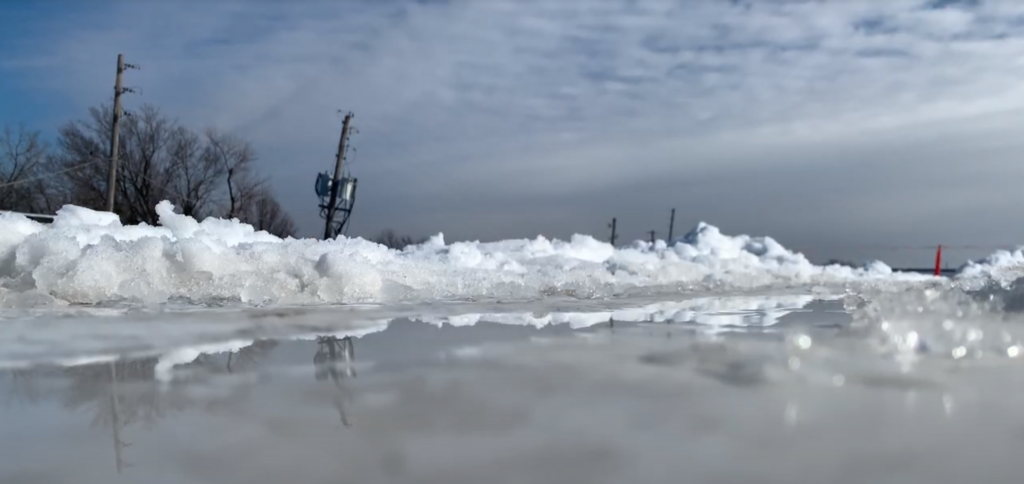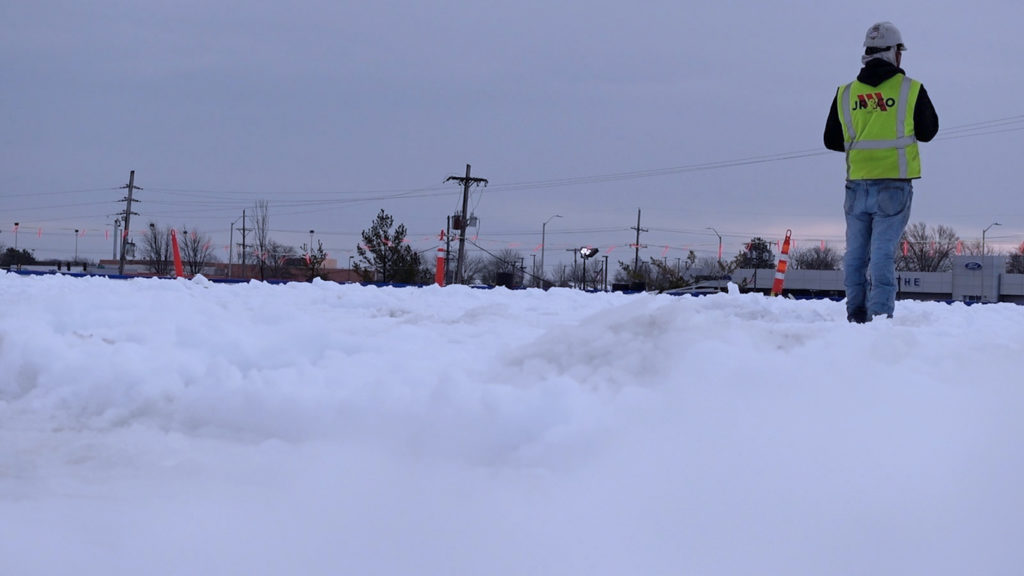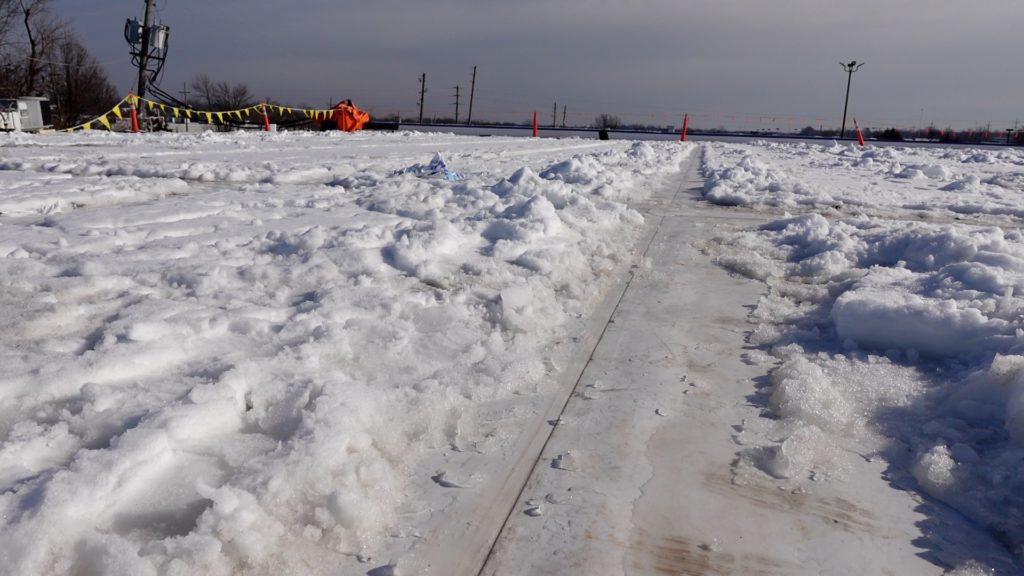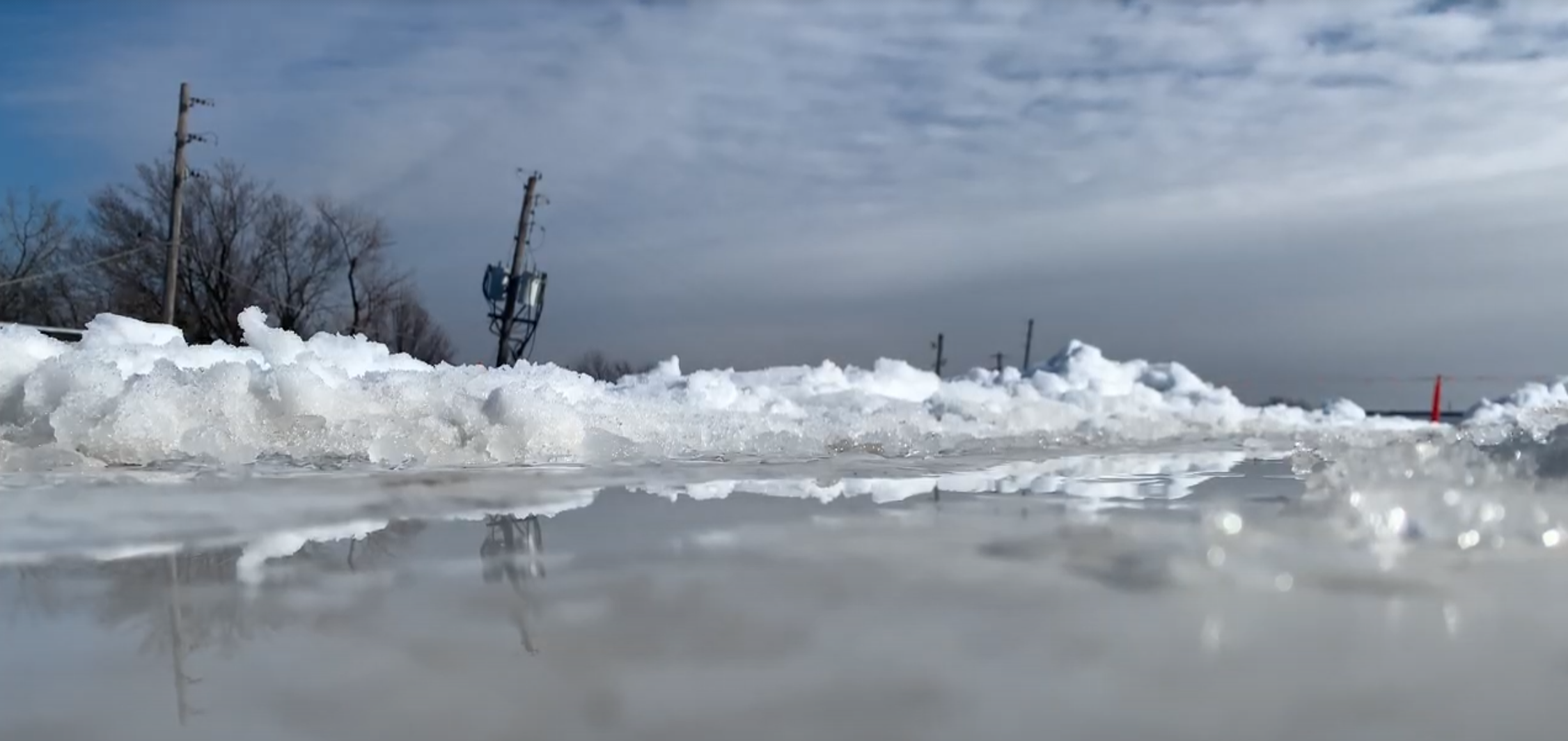Winter is officially here, and with it comes unique challenges for your roof. Today, we will discuss some of the most important things to consider when deciding how to prevent snow and ice damage to your roof. Preventing roof damage from ice and snow melt comes down to being prepared. A sound preventative maintenance plan can help drastically reduce the likelihood of damage and its impact when it does happen.
Most Common Damage from Ice in Kansas City
 While states further north deal with concerns like excessive snow weight leading to roof collapse, in the Midwest, you are more likely to deal with ice dams and melted snow.
While states further north deal with concerns like excessive snow weight leading to roof collapse, in the Midwest, you are more likely to deal with ice dams and melted snow.
Ice dams are often found inside of enclosed gutter systems. Over the winter, ice blocks form inside the gutter, preventing drainage. When excessive snow falls, warm air from the building’s own heating can thaw some of it, sending the water flowing towards the drainage systems. When the melting snow flows to the gutters, it gets stopped by the ice dams. Then, with nowhere to go but inside the water damage begins, as the water is forced into your building. Matters get worse as the water seeks out the lowest points in the building, potentially causing damage across your building. The most common snow and ice damage to roofs in Kansas City comes from these dams and snow melt.
Prevent Ice Dams from Harming your Roof
 While excessive snow creates the water, it’s really the ice dams that are the culprit of the water damage. You might be tempted just to remove snow from your roof, but that can be dangerous and time consuming. Simply put, it’s not the best way to prevent snow and ice damage to roofs. It is far better to focus on methods to prevent ice dams instead.
While excessive snow creates the water, it’s really the ice dams that are the culprit of the water damage. You might be tempted just to remove snow from your roof, but that can be dangerous and time consuming. Simply put, it’s not the best way to prevent snow and ice damage to roofs. It is far better to focus on methods to prevent ice dams instead.
Getting rid of ice dams is as easy as installing electric heat tape into your drainage systems. This method is simple and can help you combat the perils of damage from ice. Heat tape can also be programmed with a sensor to turn on automatically when hazardous temperatures are reached. This method allows you to prepare in advance and can be a huge asset in preventing water damage to your building.
Another preventative measure is the application of ice and water protective membranes. These membranes are typically installed on eaves, overhangs, valleys, and other areas vulnerable to melting snow and water damage. Depending on your jurisdiction, you may be required to have protector membranes installed in those regions, but that is not always the case. These combined with heat tape in your drainage system can help prevent ice dams and snow and ice damage to your roof.
Excessive Snow and Roof Collapse

Although less likely, roof collapse caused by excessive snow is still something to be wary of in Kansas City. As the frost line continues to migrate towards our region further and further, serious damage created by excessive snow becomes more probable. Many cities in the Kansas City Metro require certain snow load standards to help prevent roof collapse. These standards combined with limited snowfall mitigates the concern of roof collapse. However, during large snow events (12 inches of snowfall or more) snow load can still be a concern and should be monitored closely.
Roof Link: Prevent Snow and Ice Damage to Your Roof
 Roof Link is a proactive roof management system proudly offered by JR & Co. The cloud-based portal provides real-time updates and gives the user access to a vast array of powerful information about their assets. From leak history to service reports, from capital budgeting to your previous spending, managing multiple properties has never been easier.
Roof Link is a proactive roof management system proudly offered by JR & Co. The cloud-based portal provides real-time updates and gives the user access to a vast array of powerful information about their assets. From leak history to service reports, from capital budgeting to your previous spending, managing multiple properties has never been easier.
Roof Link can be very helpful when determining how to prevent damage from ice. Our comprehensive roof analysis can help locate points where ice dams could likely form, meaning we can prevent roof damage by preparing your building for the harsh winter.
Roof Link also gives you access to automatic weather notifications, with documented National Weather Service reporting. If a storm hits, and you find water damage days later as the snow melts away, you can submit a service request and have an inspection within 48 hours. Small repairs receive a discount, and large-scale operations receive priority scheduling. You can read more about our Roof Link system here.
While you can’t prevent all weather-related issues from happening, having a proactive plan in place is the best practice. Working with our team of experienced and professional service technicians, we can help you prevent critical failures and rapidly respond to any damage from excessive snow, ice dams, snow melt, and many other types of damage.
